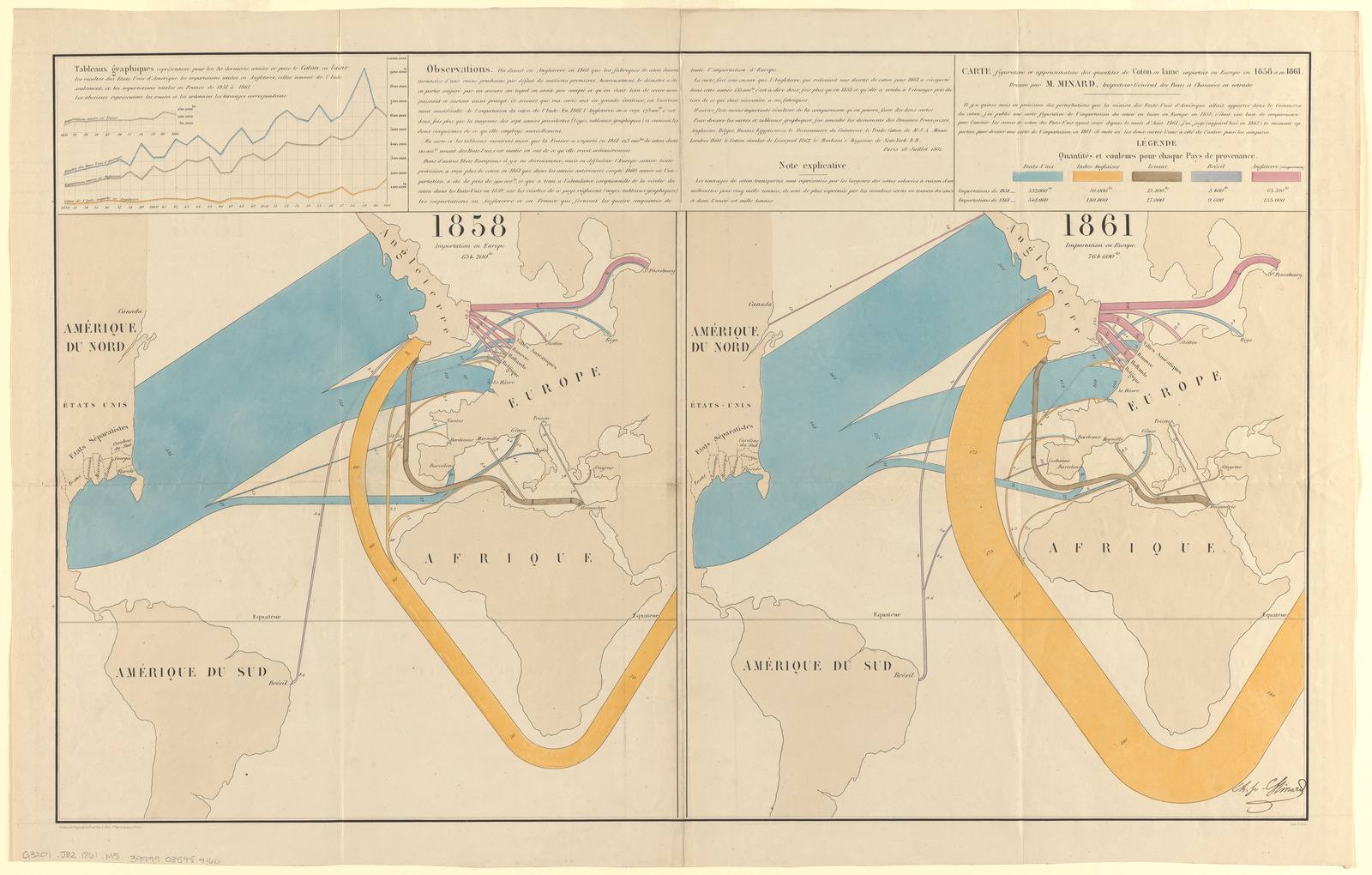Inventing a Language of Symbols
Like spoken languages, the symbols of cartography and data visualization are culturally constructed. Whether in the form of a star indicating a capital city or red crisscrosses meaning “keep out,” a map's visual language makes sense only when it is part of a recognizable system of communication between creator and reader. For cartographers, symbols can help achieve clarity and allow for the identification of patterns which might otherwise be hard to detect. The most recognizable symbols can reach readers who speak different languages, and bring complicated concepts into a form that can be easily grasped. Still, no symbol stands on its own, and each time we look at a graphic figure and think that we immediately know what it means, we need to examine what assumptions are being made.

One of the most influential figures in the history of data visualization was the French engineer and statistician Charles Joseph Minard. Minard was one of the first to use lines of different thickness to visualize the quantity of flows—as in this 1862 set of maps and tables showing the effect of the U.S. Civil War on the Atlantic cotton trade. Minard's innovation was to discard certain forms of accuracy in order to render a different register of information more legible, as in the way that this map reconfigures geographic shapes and distances in order to give space to the flow lines.
Many symbols have become so embedded into our consciousness that they no longer seem to need interpretation at all. The plaques mounted on the Pioneer spacecraft provide an startling reminder how easy it can be to slip into accidentally assuming that a symbol's meaning is self-evident. Recognizing that any far-off living thing who might encounter the probes would certainly not understand human language, the plaque's designers sought to create a truly universal visual language, using simple icons based on molecular chemistry and astronomy. But the plaque also shows the probe's route out of our solar system using an arrow. And, unfortunately for any aliens who stumble across Pioneer as well as the designers who realized their mistake only after the probe was launched, an arrow is a meaningless symbol unless you've already seen one and know that it means “in this direction.”

